The Republic of South Africa
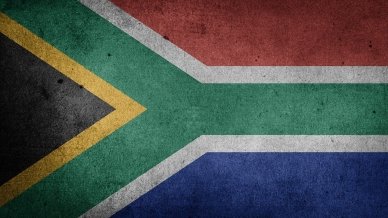
Flag of the Republic of South Africa
Talking about South Africa, people frequently use the words ‘only’, ‘best’, and ‘the most’ when comparing it with the other countries of the African continent.
It is the only country where there has never been a coup d'état. The continent’s most developed healthcare system and industries are concentrated here. Diamonds extracted in South African mines are considered to have the benchmark quality.
Snow white fine sand and sapphire ocean waters make the beaches in this country a dream of appraisers. Wild nature is perfectly coupled with ultra-modern skyscrapers. Safari is allowed all year round. And city dwellers can drink absolutely safe water in their houses. It is a perfect place for everyone willing to get to know Africa but who is unprepared for household and cultural hardcore.

General Information
The first explorers who landed on the shores of the modern Republic of South Africa were the Phoenicians. It was 600 BC when they embarked to discover new African lands. The crews of seamen used to stop there to grow and get the crops. In that way, they could replenish their food stocks and be able to move further to explore new frontiers.
Historical Background
The most ancient people who settled in the South African territories were the Khoikhoi. Though they came there a thousand years later than the Phoenicians, they still live in the RSA and neighboring countries. Over the years, the Bantu, the Damara, and others have also appeared.
Europeans emerged in that African region in the 17th - 18th centuries. Ships of tireless Dutch explorers led by Jan van Riebeeck arrived at the Cape of Good Hope to establish the first settlement - Cape Town. It became one of the three future South African capitals. Now it is the second-largest city in the country.
In more than a hundred years, the territory of the south of Africa fell under the control of the British Crown. At the beginning of the 19th century, the sovereign parliament abolished slavery and adopted a couple of new laws, which were vigorously opposed by Boers - the Dutch settlers. So they had no choice but to move further to one of the driest lands - the Highveld plateau.
However, they ended up confronting the local warrior tribes who were also searching for a place to settle. As a result of wars, two Boer states were created: the Transvaal and the Orange Free State.
A tranquil life of new republics finished in 1880 when England unleashed the first war with the Boers after the discovery of diamond deposits. At first, the Dutch managed to defend their independence, but in 70 years, the Transvaal fell. A small British force sieged the republic without any shooting.
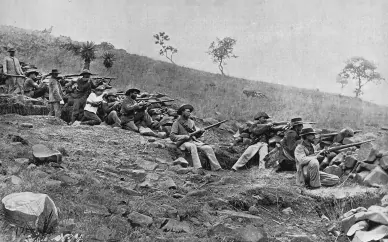
South African War, also called Boer War
Conquering the Zulu territories was not enough for the British, so they resorted to the second war and won it with minor losses. Four-year negotiations between the British Empire and the Boers followed the victory in the war. As a result, the Union of South Africa as a British dominion was established and comprised the four colonies - Natal, Cape, Transvaal, and the Orange Republic.
The Union existed from 1910 to 1961 and even was in the two World Wars during that period. In 1961, the Union of South Africa became the republic with a policy not much different from the one led by predecessors. Apartheid continued and people were segregated by race and colour of their skin.
That policy became the reason why South Africa withdrew from the Commonwealth of Nations because member states could not consent to the violation of rights of the black population. The country rejoined the Commonwealth in 1994 when the apartheid era officially came to an end.
Nelson Mandela was elected to serve as the first black President of South Africa.
Though it was an uneasy time for the white minority, the republic managed to avoid civil war and burdensome economic losses. Despite a relatively smooth resolution of the longstanding conflict, there is still some hostility between the black and white population. From time to time, outbreaks of unrest take place, and police record the acts of aggression.
Geography
The Republic of South Africa borders five countries: Namibia, Mozambique, Eswatini, Botswana, and Zimbabwe. And there is also an enclave of Lesotho. The nature and climatic conditions of the republic are very versatile.
The hottest and driest region is the Namib desert that stretches along the RSA and Namibia. Subtropical regions constitute a spectacular stretch of the Indian Ocean coast with its white-sand beaches and also mountainous terrains with plateaus, savannahs, and semi-deserts along the South Africa-Mozambique border.
Summer in South Africa begins in December and ends in February or March. During this season, it is almost always sunny early in the day and thunderstorms occur in the evening. Nights are usually cold. Winter comes in June and ends in August.
The high season takes place from November to March: thousands of tourists come, and prices shoot up. However, everything depends on the region. For example, this time is best for going to Cape Town and the ocean coast beaches. Safari lovers go to South Africa in winter (July and August) when trees are shedding their leaves, and all animals can be clearly visible. Those willing to take delight in African winter and blossom of jacaranda should choose a tour during the September-November period.
Population, Economy, and Currency
The Republic of South Africa is a unique country with three capitals. The main is Pretoria where the country’s government seats. Its population is 800,000 people. The second most important capital is Cape Town with a population of 3.7 million people. Johannesburg, the only city larger than Cape Town, is the center of Gauteng, the most prosperous province of the republic: more than four million people live there. South African Parliament is located in Cape Town.
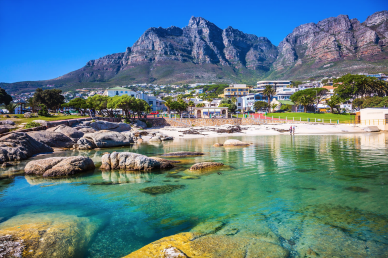
Cape Town
The third capital is Bloemfontein with a population of 255,000 people, the former main city of the Orange Free State. The Supreme Court of Appeal of South Africa is situated here.
In total, more than 50 million people live in the RSA, and the vast majority is the Black population. Their number continuously grows because of migrants arriving from other African countries. A lot of White people migrate to the USA and Europe. At present, they constitute approximately 7% of the total South African population. The other - coloured and Asians - make around 10%.
An average life expectancy of a South African citizen is very short - only 49 years.
It is considered a pretty good figure though. Because 20 years ago, the residents of the very edge of the African continent could not live longer than 42 or 43 years. The main reason why was a tremendously high crime rate. Interestingly, men live a bit longer than women in the RSA.
Though the economic development here is uneven, the Republic of South Africa is flourishing in comparison with the other African countries. Only 20% of local residents are unemployed, and one-third of families live on two dollars a day while in Namibia they live only on one dollar.
The other 20% of the RSA citizens are lucky to be born White, to make a fortune, or just to find a job. Their level of life is good enough: they earn a bit less than in Taiwan - around R20,000 (€1,200). So-called income swings breed considerable resentment among the poor, and thus the social situation is far from tranquil.
There are 12 official languages in the country: English, Afrikaans, and ten tribal languages like Venda, Zulu, Xhosa, and others.
The rand (ZAR) is the official currency of the Republic of South Africa. It is a freely convertible currency that has been included in the list of CLS clearing currencies since 2004. The ZAR-USD exchange rate is 0.071 USD
Directions
Getting to South Africa from Europe is possible only by plane.
Travellers will need a visa and a long list of documents that should be submitted to the Embassy personally.
There are no direct flights, but a transfer in Dubai is convenient enough. The flight takes around 16-22 hours depending on the transfer airport and the waiting time. Foreigners may arrive only at two airports - in Johannesburg and Cape Town.

Accommodation
South African hotels compare favourably with the other African countries owing to the quality service. The majority of them offer clean rooms, trained staff, and tasty cuisine. And prices are no different from the European ones.
Apart from ultra-modern hotels with a traditional set of facilities, camping sites, and motels, there are loads of local exotic things. Hotels are designed in the style of African villages, and the rooms are decorated with animal skins and furnished with plain wooden items.
In natural reserves, immense popularity is gained by lodges - hotels that consist of separate bungalows with a full or partial set of facilities. Their level varies between the budget option and AI, UAI, and Luxury.
- President Hotel is a four-star hotel in Cape Town with a terrace with spectacular views of the Atlantics and mountains. The rooms are designed in a modern style and have air-conditioning and kitchenettes. The restaurant has a buffet.
- Beyond the Boma is a four-star lodge in Marloth Park located three kilometres from Lionspruit Reserve. Each bungalow room offers a full set of facilities - air conditioning, mini bar, hairdryers, ironing supplies, and free Wi-Fi. The guests may also enjoy a shared sunny terrace and an excellent restaurant.
- Pine Lodge Resort is a three-star chalet in Marine Drive, Port Elizabeth. Located by the ocean, this resort place includes timbered cottages with a full set of facilities. There is a bar, a swimming pool, a restaurant, and free parking. Transfer to the airport is offered.
- Jean-Alno is a three-star guesthouse in Modimolle. It is a great place for barbecue lovers to have rest. There are all the necessary facilities, free parking, and the Internet.
- Waterfall Cottages is a four-star BB-type hotel (with free continental breakfast) located in Johannesburg. Guests are offered cosy cottages designed in the style of old country houses with kitchens, a children’s playground, and free Wi-Fi and parking.
Tourists will need to consider certain peculiarities of staying in South African hotels, particularly when using electrical appliances. In most hotels, the electric current is standard 220V with a frequency of 50Hz. However, the hotels in Pretoria and Port Elizabeth offer power sockets with a current of 200V-250V.
Places to See
Any big city in the Republic of South Africa is an astonishing mix of ultra-modern glass-and-concrete jungles, Amsterdam-like narrow streets, and pompous monuments that have remained since the colonial era. And these things create unmatched local charm.
All urban attractions of this very-edge country make it African Europe.
They are interesting in their own way, but not many people go to the RSA to see city halls, Protestant churches, or government buildings.
First of all, South Africa is about national parks of rare beauty where animals live in their familiar environment, rough terrains of the Kalahari Desert, the Drakensberg, Cape of Good Hope, and lush beaches of Cape Town and Plettenberg Bay.
Below are only five must-see places where one should definitely go when in the Republic of South Africa:
Kruger National Park
South Africa’s first game reserve at the national level was opened in the 19th century. It is located 400 km from the largest city - Johannesburg. The park complex is a habitat for all species of African fauna: zebras, giraffes, buffaloes, rhinos, and other large and small animals.
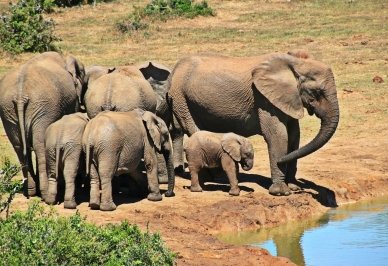
A herd of elephants in the Kruger National Park
A guided tour of the reserve is a great opportunity to see the natural life of its inhabitants first-hand. Right there, numerous guesthouses, small hotels and hostels offer comfortable nights lodging and tasty food.
Cradle of Humankind
Such an exalted name has been given to the paleoanthropological museum located not far from Johannesburg. The site has been declared as the UNESCO World Heritage Site as a unique display of artifacts and human remains that are indicative of life origins on Earth. Forty-metre-deep sinister and mystic caves of Sterkfontein at some point became the source of sensational discoveries. Skeletons of people aged two or three and a half million years were found there.
Zeitz Museum
The world’s biggest exhibition of African art is mounted in the museum in Cape Town on the Table Bay shore.
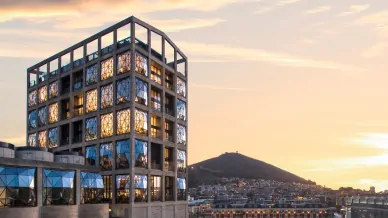
Zeitz Museum, South Africa
There used to be a grain storage barn that was rebuilt at the beginning of the 21st century. This nine-strorey building now hosts theme-based exhibits of modern African art (the works of painters of African origin) on each floor.
Plettenberg Bay
It is a must-visit place for everyone who is well-off. There are the best South African beaches, fashionable hotels, and fabulous shopping arcades. Apart from having a nice rest, people can purchase luxury real estate here (foreigners in particular).
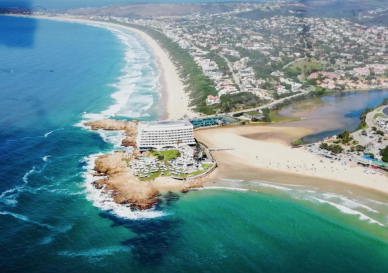
Plettenberg Bay
Cape of Good Hope
This romantic name known from geography classes is not referred to the romantic place. Loads of ships sank because of fierce storms in the waters close to the cape where the Indian and Atlantic oceans meet.
Nonetheless, heroic navigators did not lose hope to find a safe way to India, so they named the peninsula after hope, a good companion of seamen.
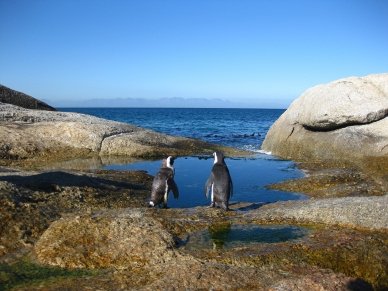
Cape of Good Hope
Now it is the edge of the Cape Peninsula where the reserve is located. Baboons, antelopes, and the entire penguin colony friendly inhabit the place.
Breathtaking views may be enjoyed from Table Mountain that rises more than a thousand metres above sea level. Hiking trails or Aerial Cableway will enable tourists to ascent to the summit.
Food
South African cuisine is a symbiosis of cooking traditions from all over the world. Historically, the south of Africa has always attracted adventurers, travellers, and sailors. And each of them used to bring some recipes of their favourite dishes.
The Dutch have influenced South African cuisine most.
Not only did they take the lead in settling the African continent but also in authoring the local cookery books. People in the RSA still eat plain and healthy food like different vegetable or meat stews with herbs and wine, porridges, sausages, and baked potatoes.
Asians have also contributed in their own way. They introduced tomatoes and beans, taught cooking pilaffs, meatballs, and roasting fish. People in South Africa still like eating such Indian dishes as chutney sauce, curry, and casseroled chicken.
Everyone who comes to South Africa should definitely enjoy exclusively local cuisine. It is the national Boehr’s dish called biltong - the spiced beef fillet. The meat is marinated and then dried for several days. They usually serve it with beer or other beverages or just as a snack.
Braai is one more local food attraction. However, this dish can be hardly called purely African because it is just an ordinary barbecue that constitutes grilled meat, sausages, seafood, and vegetables.
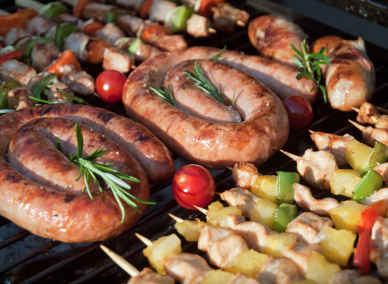
South African Braai
A trip to the Republic of South Africa will not be low-budget because of the vast distance that has to be travelled only by plane. However, those who can afford this will be overwhelmed with impressions, which are worth the money and time spent here.







